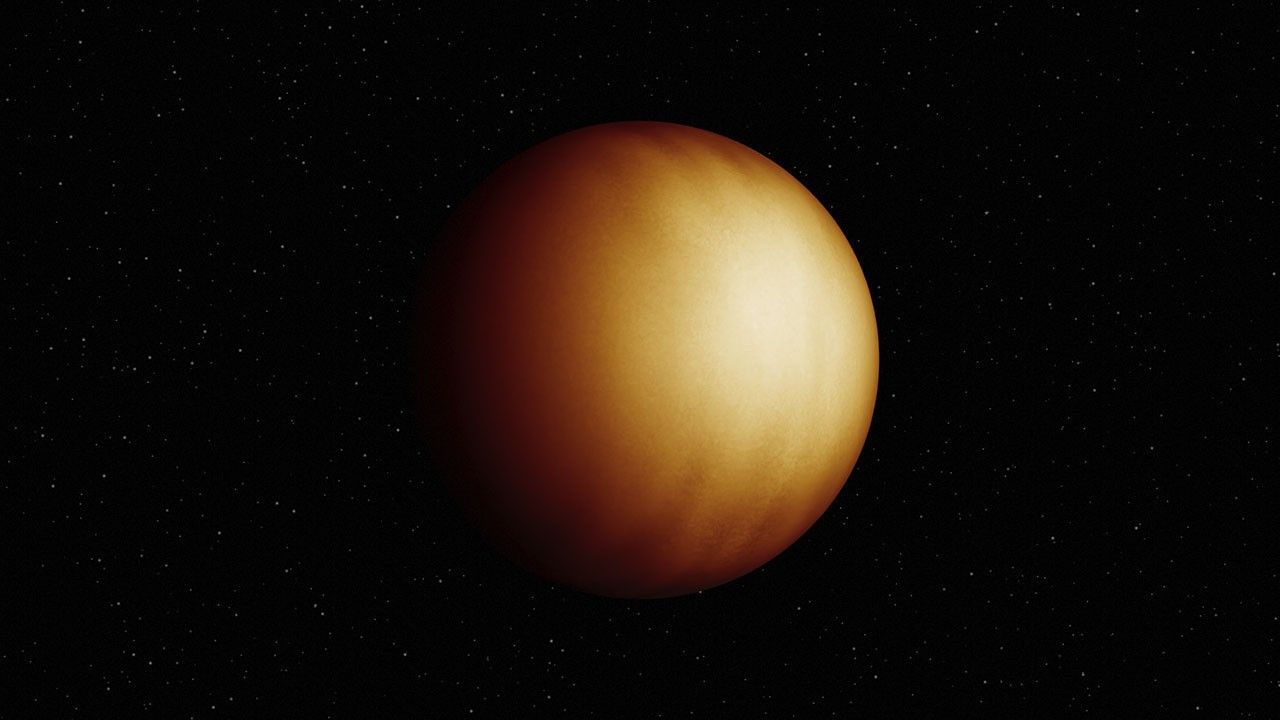Scientists use James Webb Space Telescope to make 1st 3D map of exoplanet — and it's so hot, it rips apart water
It's the first use of a new technique called 3D eclipse mapping.

Astronomers have produced the first-ever three-dimensional map of a planet outside our solar system — WASP-18b — marking a major leap forward in exoplanet research.
Using the James Webb Space Telescope, researchers applied a new technique called 3D eclipse mapping, or spectroscopic eclipse mapping, to track subtle changes in various light wavelengths as WASP-18b moved behind its star. These variations allowed scientists to reconstruct temperature across latitudes, longitudes and altitudes, revealing distinct temperature zones throughout the planet's atmosphere.
"If you build a map at a wavelength that water absorbs, you'll see the water deck in the atmosphere, whereas a wavelength that water does not absorb will probe deeper," Ryan Challener, a postdoctoral associate in Cornell’s Department of Astronomy and lead author of a study published on the research, said in a statement. "If you put those together, you can get a 3D map of the temperatures in this atmosphere."
WASP-18b is located about 400 light-years from Earth; it has roughly 10 times Jupiter's mass and completes an orbit of its host star in just 23 hours. Because it's so close to its star, temperatures in the planet's atmosphere reach nearly 5,000 degrees Fahrenheit (2,760 degrees Celsius). Those scorching conditions made it an ideal candidate for testing the new method of 3D temperature mapping.
The map revealed a bright central hotspot surrounded by a cooler ring on the planet's dayside — it has a tidally locked orbit, meaning that one side of the planet is always facing its star — demonstrating that the exoplanet's winds fail to distribute heat evenly across the atmosphere.
Remarkably, the hotspot showed lower water vapor levels than WASP-18b's atmospheric average. "We think that's evidence that the planet is so hot in this region that it's starting to break down the water," Challener said. "That had been predicted by theory, but it’s really exciting to actually see this with real observations."
This new 3D eclipse mapping technique will open many doors in exoplanet observations, as it "allows us to image exoplanets that we can't see directly, because their host stars are too bright," said Challener. As 3D eclipse mapping is applied to other exoplanets observed by Webb, "[w]e can start to understand exoplanets in 3D as a population, which is very exciting," he added.
Breaking space news, the latest updates on rocket launches, skywatching events and more!
The team's research was published in the journal Nature Astronomy on October 28, 2025.
Join our Space Forums to keep talking space on the latest missions, night sky and more! And if you have a news tip, correction or comment, let us know at: community@space.com.

Space.com contributing writer Stefanie Waldek is a self-taught space nerd and aviation geek who is passionate about all things spaceflight and astronomy. With a background in travel and design journalism, as well as a Bachelor of Arts degree from New York University, she specializes in the budding space tourism industry and Earth-based astrotourism. In her free time, you can find her watching rocket launches or looking up at the stars, wondering what is out there. Learn more about her work at www.stefaniewaldek.com.
You must confirm your public display name before commenting
Please logout and then login again, you will then be prompted to enter your display name.
